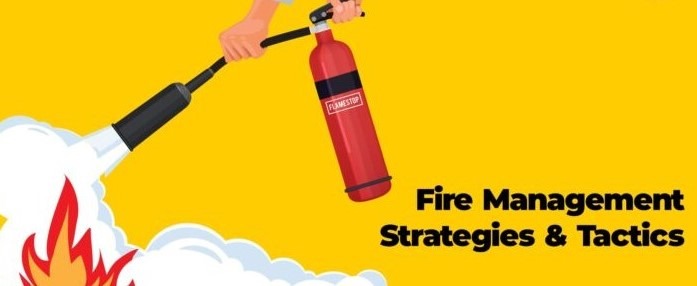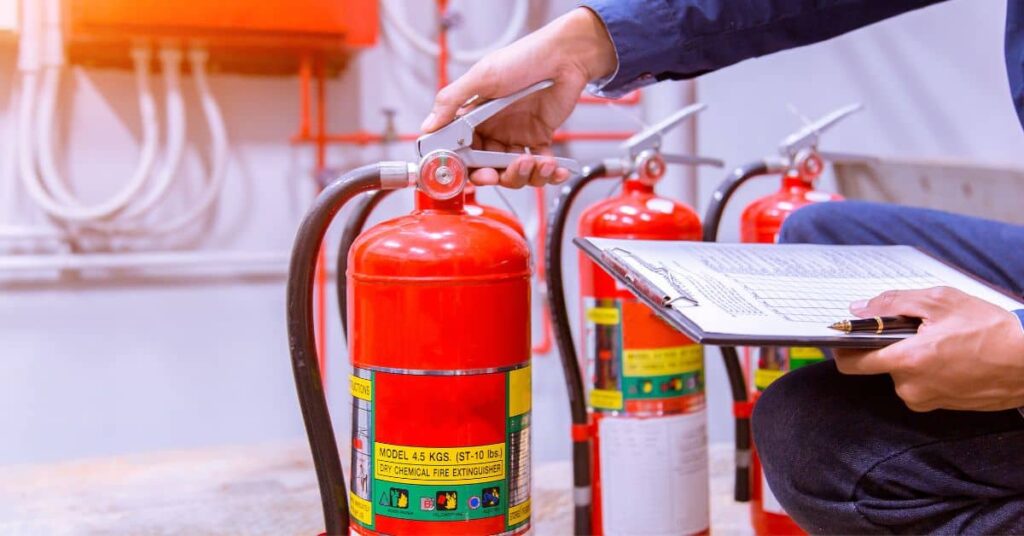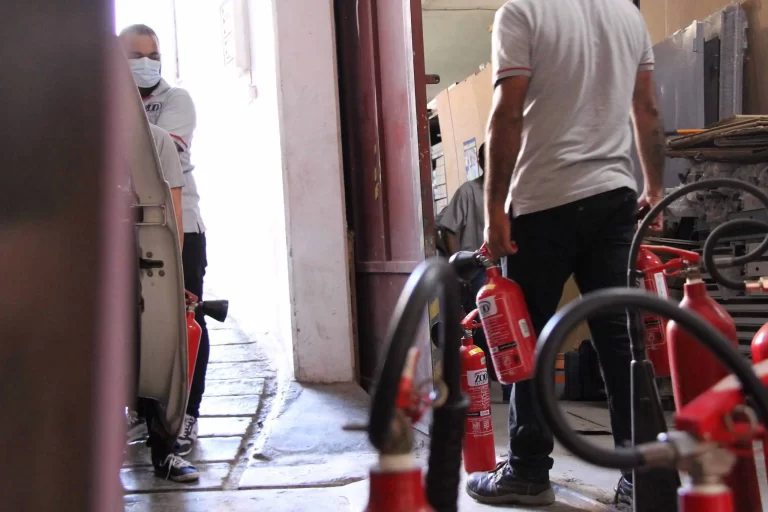Top 10 Fire Safety Tips for Workplaces
- Understanding Common Workplace Fire Hazards
- Fire Prevention Strategies
- Compliance with Fire Safety Standards and Regulations
- Discussing the Consequences of Neglecting Fire Safety Protocols
- Overall Conclusion
Workplace fires are a serious threat that can cause significant property damage, loss of life, injuries, and business interruptions. Fire hazards are often underestimated or overlooked until a disaster occurs. However, identifying potential risks and implementing fire safety measures can make all the difference.
In this guide, we’ll explore the common causes of workplace fires, effective prevention strategies, and the importance of complying with fire safety regulations that highlight both successes and failures in fire safety management.
Let’s dive into the key fire safety insights every workplace should adopt.
Understanding Common Workplace Fire Hazards
A. Electrical Hazards
Electrical issues are one of the leading causes of workplace fires. Overloaded circuits, faulty wiring, and poorly maintained equipment can quickly escalate into a serious fire.
· Overloaded Circuits and Power Strips: Overloading power sources with too many devices increases the risk of overheating and sparks. For example, in busy offices, it’s common to find multiple computers, printers, and other equipment connected to a single power strip. When these devices collectively draw more power than the circuit can handle, it leads to heat buildup that can melt wiring and cause a fire.
TIP 1: Use circuit breaker-equipped power strips and distribute devices across multiple outlets. Educate employees on the dangers of overloading circuits and ensure that power strips are used within their rated capacity.
· Faulty Wiring and Electrical Equipment: Outdated or damaged electrical components pose a significant risk. Frayed cords, deteriorating outlets, and exposed wires are all potential ignition sources. For instance, an older office building with outdated wiring that hasn’t been properly inspected or maintained may have hidden faults that could ignite at any time.
TIP 2: Conduct regular inspections of wiring, outlets, and equipment. Immediately replace any damaged components and upgrade outdated systems to modern, safer alternatives. It’s also essential to hire certified professionals for any electrical work and repairs.
B. Human Error Factors
Human error is another leading cause of workplace fires. Improper use of heating appliances and the mishandling of flammable materials can easily result in dangerous situations.
· Improper Use of Heating Appliances: In many workplaces, employees use space heaters, coffee makers, or microwaves for convenience. However, these devices can become fire hazards if misused. For example, placing a space heater too close to flammable objects like curtains or paper, or using one with a damaged cord, can easily lead to a fire.
TIP 3: Educate employees on the safe use of heating appliances, including keeping them away from combustible materials and regularly checking them for damage. Ensure that appliances are turned off when not in use and plugged directly into wall outlets rather than extension cords.
· Mishandling Flammable Materials: Offices often store flammable items such as paper, cardboard, and cleaning chemicals. Careless handling, improper storage, or leaving these materials near ignition sources can lead to fires. For example, storing cleaning supplies next to a heat source in a poorly ventilated space is a recipe for disaster.
TIP 4: Implement clear guidelines for storing and handling flammable materials. Ensure these items are stored in designated areas away from heat sources, and educate employees about safe practices.
C. Chemical Hazards
Many industries deal with hazardous chemicals that require special attention to avoid fires. Poor storage and handling practices can lead to chemical fires, especially when dealing with flammable or reactive substances.
· Storage and Handling of Hazardous Materials: Chemicals stored incorrectly, such as in poorly ventilated areas or near incompatible substances, can lead to fires. In a manufacturing facility, for example, storing flammable liquids near open flames or in unsealed containers could easily lead to a catastrophic fire.
TIP 5: Follow strict safety guidelines when storing and handling chemicals. Ensure that all containers are properly labeled, stored in ventilated areas, and kept away from ignition sources.
· Combustible Chemicals in the Workplace: Certain chemicals are prone to spontaneous combustion if exposed to air or other reactive materials. For instance, chemicals like sodium or potassium can ignite upon contact with moisture or oxygen if not stored correctly.
TIP 6: Identify reactive chemicals and store them in controlled environments away from incompatible substances. Regularly inspect storage areas and train staff on the specific risks associated with these materials.

Fire Prevention Strategies
A. Implementing Safety Policies and Procedures
· Creating a Clear Evacuation Plan: An effective evacuation plan should include multiple escape routes, designated assembly points, and specific roles for personnel during emergencies. The plan should be communicated and displayed throughout the workplace.
TIP 7: Regularly review and update the evacuation plan, especially if there are changes to the workplace layout or staff.
· Conducting Regular Fire Drills and Training Sessions: Fire drills and safety training are vital for familiarizing employees with procedures in the event of a fire. Regular drills ensure that employees remain aware of exit routes, assembly points, and their responsibilities during an emergency.
TIP 8: Conduct training sessions that cover fire extinguisher use, emergency communications, and identifying fire hazards.
B. Utilizing Fire Safety Equipment
Effective fire safety requires the right equipment and diligent upkeep. Fire alarms come with various detectors, including smoke, heat, and gas detectors, each designed for different fire risks. For instance, heat detectors are better suited for areas where smoke might not be the primary indicator of fire, such as kitchens or industrial settings.
Fire suppression systems also encompass more than just sprinklers. Depending on the type of fire risk, such as Class A, B, C, or K, the appropriate suppression system might include gas systems, foam-based systems, or clean agents. Each system is tailored to effectively manage different fire types.
Regular maintenance and inspections are crucial to ensure that all fire safety equipment is operational. This involves checking alarms, detectors, an suppression systems to confirm they are in working order and ready for emergencies. Keeping detailed maintenance logs and scheduling routine checks help prevent equipment failures and ensure swift, effective responses to any fire incidents.

Compliance with Fire Safety Standards and Regulations
A. Overview of Workplace Fire Safety Regulations
Workplace fire safety regulations vary depending on local laws, industry-specific standards, and building codes. These regulations dictate everything from how safety equipment should be installed and maintained to how businesses should conduct fire risk assessments.
TIP 9: Stay updated on relevant fire safety regulations for your industry and location. Consider consulting with fire safety experts to ensure your business meets all required standards.
B. Importance of Compliance and Legal Responsibilities
Compliance with fire safety laws isn’t just about avoiding fines or penalties—it’s about creating a safe environment for employees and visitors. Failure to comply can result in severe consequences, including legal action, insurance claims, and reputational damage.
TIP 10: Regularly audit your fire safety practices to identify gaps. Ensure your business maintains all necessary fire safety certifications and licenses.
C. Steps to Ensure Adherence to Fire Safety Standards
Implementing fire safety measures involves a step-by-step approach, including regular assessments, updating safety plans, and continuous training.
By comprehensively understanding and acknowledging the importance of compliance, and proactively taking steps to ensure adherence, workplaces can significantly minimize fire hazards and fulfill their legal and ethical responsibilities towards safety and well-being.

Discussing the Consequences of Neglecting Fire Safety Protocols
Neglecting fire safety protocols can lead to devastating consequences, including loss of lives and severe injuries, as inadequate evacuation routes and procedures can leave people trapped in dangerous situations. Financial losses from property damage can be crippling, even with insurance coverage, while legal non-compliance may result in fines, lawsuits, and severe penalties. The reputational damage following a preventable fire incident can erode customer trust and tarnish a company’s image, leading to long-term business challenges.
By learning from these case studies, businesses can understand the catastrophic ramifications of neglecting fire safety protocols. It underscores the urgency of investing in robust fire protection measures to prevent not only the loss of lives and property but also the potential long-term impacts on business continuity and reputation.
Key
Takeaways
Fire hazards are an ever-present risk in workplaces, but
they can be effectively managed with the right strategies. By identifying
common hazards, implementing safety measures, ensuring compliance with
regulations, and learning from real-life incidents, businesses can foster a
culture of fire safety and preparedness.
Emphasizing
Proactive Management
The importance of proactive fire hazard management cannot be
overstated. Investing in comprehensive fire protection measures, including
robust safety policies, well-maintained safety equipment, and stringent
adherence to regulations, stands as the bedrock of a secure workplace
environment.
Encouragement
for Implementation
Take action today—review your workplace’s fire safety
measures, update your evacuation plans, and ensure your fire safety equipment
is properly maintained. Remember, a proactive approach to fire safety is the
best way to protect lives, property, and your business.


